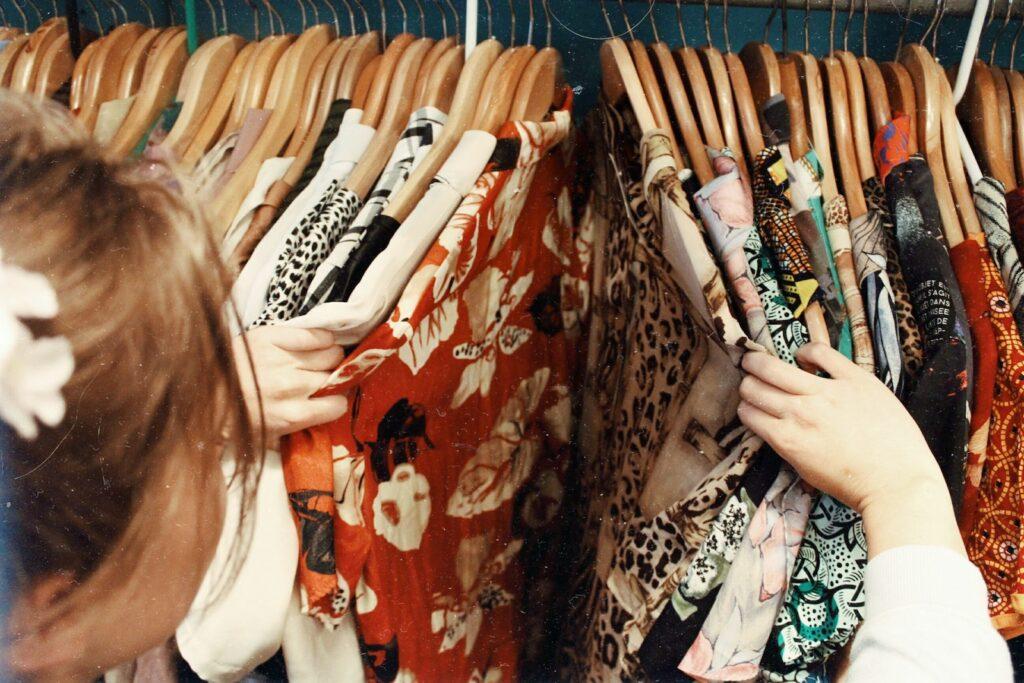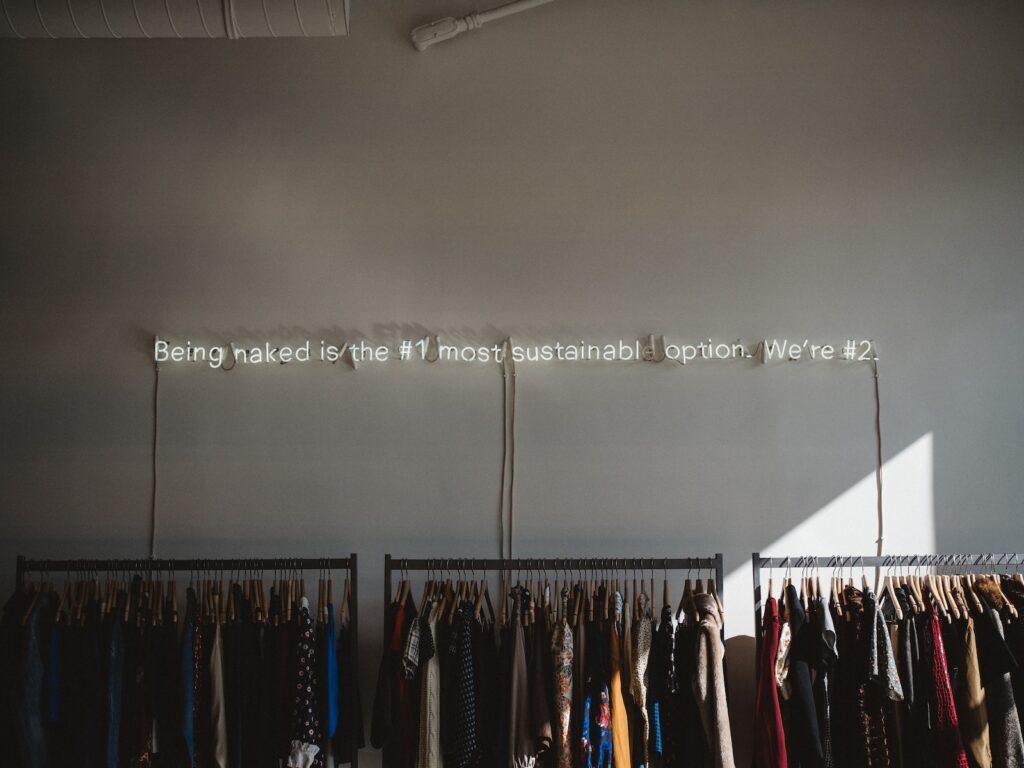This article discusses the importance of sustainable fashion, including its environmental and social impact and how to practice it.
As consumers, we have the power to change the fashion industry for the better. By supporting sustainable fashion, we can contribute to a healthier planet and a more just society.
What is sustainable fashion?
Sustainable fashion refers to clothing, shoes, and accessories that are produced in an environmentally and socially responsible manner. This includes using materials that are renewable and non-toxic, reducing waste throughout the production process, and ensuring that workers are treated fairly and paid living wages.
The fashion industry has a massive carbon footprint due to its reliance on non-renewable materials like polyester and its energy-intensive manufacturing processes. But sustainable fashion seeks to address these issues by promoting the use of natural fibers like organic cotton or hemp, recycled materials like plastic bottles or old fabrics, or innovative new materials made from mushrooms or algae.
The Rise of Fast Fashion
Fast fashion emerged in the 1990s as a way for retailers to quickly churn out trendy clothes at low prices. The business model relies on cheap labor in developing countries where workers are paid very little for long hours in dangerous working conditions. In addition to exploiting workers, fast fashion also has severe environmental consequences.
The production process involves vast quantities of water usage as well as toxic chemicals used during dyeing and finishing. Once consumers discard these clothes after only a few wears (often due to poor quality), they end up in landfills where they release harmful chemicals into the soil.
The Importance of Sustainable Fashion
Sustainable fashion offers an alternative approach that prioritizes people and planet over profit margins. By supporting eco-friendly brands or shopping secondhand, consumers can reduce their environmental impact while also promoting fair labor practices across the globe.
In addition to reducing waste and improving working conditions, sustainable fashion also encourages creativity and innovation. Designers are experimenting with new materials and production methods that push the boundaries of what’s possible in fashion while respecting the limits of our planet.
The Thesis: Why Sustainable Fashion is Crucial
Sustainable fashion is not just a trend; it’s a necessity. As the climate crisis worsens and resources become scarcer, we must seek out more sustainable ways of living and consuming to ensure a livable future for ourselves and future generations. And as consumers, we have the power to drive change by supporting brands that prioritize ethical practices and environmental stewardship.
Environmental Impact of Fast Fashion
Fast fashion is a term used to describe the mass production and consumption of clothing at a rapid pace. It is characterized by its low cost, low quality, and trendy nature.
The process of producing fast fashion involves the use of synthetic materials, toxic dyes, and harsh chemicals that are harmful to the environment. The fast fashion industry is known for being one of the most polluting industries globally.
Explanation of Fast Fashion and its Production Process
The process involved in producing fast fashion starts with design sketches that are turned into patterns. These patterns are then transferred onto fabrics that are often made from non-renewable resources such as fossil fuels, including polyester and nylon. The fabrics are then dyed using toxic chemicals that pollute waterways and harm aquatic life.
After dyeing, the fabric is cut into pieces and sewn together by workers in developing countries who receive very low wages with little job security or benefits. These workers often work in unsafe working conditions without adequate protection from harmful materials such as lead or cadmium.
The Negative Impact on the Environment: Pollution, Waste, and Carbon Emissions
The fast fashion industry generates an enormous amount of waste every year; it is estimated that 92 million tons of textile waste were generated globally in 2015 alone. This waste ends up in landfills where it can take hundreds of years to decompose while releasing methane gas into the atmosphere contributing to global warming.
In addition to waste generation, fast fashion also contributes significantly to pollution through its production process; textile dyeing alone is responsible for 20% of water pollution worldwide. Chemicals used during production not only pollute waterways but also contribute to air pollution via emissions released during manufacturing processes such as burning fossil fuels.
Fast fashion’s negative environmental impact extends beyond pollution; carbon emissions produced through transportation also play a significant role in contributing to climate change. The transportation of clothing materials, finished products, and waste contribute to greenhouse gases that trap heat in the atmosphere and contribute to global warming.
Statistics to Support the Argument
According to a report by the Ellen MacArthur Foundation, the fashion industry contributes 10% of global carbon emissions and is the second-largest consumer of water worldwide. Additionally, it is estimated that 85% of textiles end up in landfills every year. The production of synthetic fabrics such as polyester releases two to three times more carbon emissions than cotton.
It is also estimated that textile dyeing alone produces around 1.2 billion tons of CO2 annually. The environmental impact of fast fashion cannot be overstated.
Its production process contributes significantly to pollution, waste generation, and carbon emissions that harm both people and our planet. Adopting sustainable practices when it comes to fashion can help reduce these negative impacts while also benefiting society as a whole.
The Social Impact of Fast Fashion
While fast fashion has become a trend for affordable clothing, the production of these garments has resulted in a massive social impact on people. The majority of the workers producing these garments are located in developing countries, where they work tirelessly under harsh conditions to meet the growing demand for fast fashion.
Exploitation of Workers in Developing Countries
Garment workers in developing countries face exploitation at various levels. A significant number of them are women and children who work long hours without receiving fair wages or benefits.
Many companies take advantage of their vulnerability and offer them jobs under poor working conditions. According to a report by Oxfam, garment factory workers in Bangladesh earn only $96 per month, which is not sufficient for a decent living standard.
Poor Working Conditions
The working conditions in garment factories are often unsafe and hazardous. Workers operate on machines that lack basic safety measures, leading to frequent accidents and injuries.
They work long hours with minimal breaks or rest days, causing physical and mental exhaustion. Moreover, the noise level and lack of proper ventilation have adverse health effects on garment workers.
Low Wages
The low wages offered by garment factories account for only a fraction of the cost that goes into producing garments sold at high prices globally. Garment factory owners pay their employees meager salaries as they seek to maximize profits while keeping costs low. As a result, many workers struggle with poverty despite working long hours.
Child Labor
The fast fashion industry is notorious for using child labor in its production process. Children are forced into labor since they can be paid less than adults and may not be aware of their rights as employees. In countries like Bangladesh and India, it is common to see children as young as five years old working in garment factories.
These social impacts are unacceptable and must be addressed urgently. Every individual must understand the consequences of fast fashion on people’s lives and make informed decisions to support sustainable fashion that aligns with ethical and moral standards.
Benefits of Sustainable Fashion
The Environmental Benefits of Sustainable Fashion
Sustainable fashion can contribute to a reduction in the carbon footprint and waste produced by the fashion industry. Traditional fashion production methods create considerable waste that ends up in landfills, oceans, or incinerators. In contrast, sustainable fashion uses eco-friendly materials such as organic cotton, hemp, and recycled fabrics to reduce its carbon footprint and protect natural resources.
By choosing environmentally conscious brands that rely on solar power and energy-efficient manufacturing practices, consumers can reduce their impact on the environment. According to a report by the Ellen MacArthur Foundation, more than $500 billion worth of value is lost annually due to clothing underutilization and lack of recycling.
As a response, sustainable brands focus on extending the lifecycle of clothing items through timeless designs or multi-functional pieces that can be styled in various ways. This approach not only reduces waste but also encourages a shift towards more responsible consumer behavior.
The Social Benefits of Sustainable Fashion
Fast fashion often relies on exploitation in developing countries with poor working conditions and child labor practices. In contrast, sustainable fashion promotes fair labor practices that prioritize worker safety, fair wages and ethical treatment for all involved in the production process. According to research by Fairtrade International 2018 report highlights how fair trade businesses manage to improve working conditions for people worldwide focusing on giving opportunities for women farmers who face particular challenges around gender inequality.
Sustainable brands also support local communities by using local materials where possible. The use of eco-friendly materials improves soil quality while reducing water consumption since organic cotton doesn’t require heavy irrigation like conventional cotton crops.
The Economic Benefits of Sustainable Fashion
Sustainability in fashion creates economic growth while supporting small businesses globally at every level in textiles production supply chain from farming up until final products are sold off at retail stores. Brands sourcing environmentally friendly materials foster economic growth and promote local businesses. Small businesses that rely on sustainable resources, such as organic cotton growers, can benefit from increased demand for their products.
The promotion of a more conscious consumer culture encourages brands to adopt environmentally friendly practices that ultimately enhance their social responsibility. Brands like Patagonia, which use recycled materials and commits to giving 1% of annual sales to environmental nonprofits are an excellent example of how sustainability can drive profits.
The Statistics Supporting Sustainable Fashion
According to a report by the United Nations Environment Programme (UNEP), the fashion industry is responsible for 10% of global carbon emissions. Estimates also suggest that clothing consumption is expected to double by 2030, further exacerbating its environmental impact. The fashion industry is responsible for significant greenhouse gas emissions and water usage: producing just one cotton T-shirt requires around 2,700 liters of water.
However, according to a report by Textile Exchange, switching from conventional cotton to organic cotton could reduce up to 98% of the water usage in production. According to research conducted by Nielsen in 2018 sustainability-marketed products globally had a growth rate of over $129 billion since 2014.
Consumers are investing in sustainable products with the conscious decision-making process; this includes purchasing less often but more durable products. These statistics highlight both the negative impact fast fashion has on our planet and how choosing sustainable options can combat these issues while promoting economic growth worldwide.
How to Practice Sustainable Fashion
Buying from Sustainable Brands or Thrift Stores
One way to practice sustainable fashion is to buy from sustainable brands or thrift stores. Sustainable brands use eco-friendly materials and ethical labor practices, and their products are often more durable than fast fashion items.
Thrift stores offer a great selection of second-hand clothing at a fraction of the cost of new items, which saves money and reduces waste. Supporting sustainable brands and thrift stores also sends a message to the fashion industry that consumers care about ethical and eco-friendly practices.
Making Conscious Choices When Shopping
Another way to practice sustainable fashion is by making conscious choices when shopping. This means choosing quality over quantity, investing in timeless pieces instead of trendy items that will go out of style quickly, and buying only what you need. It also means considering the environmental impact of your purchases, such as avoiding clothing made with synthetic materials or supporting companies with transparent supply chains.
Reducing Waste by Recycling or Upcycling Clothing Items
Another way to practice sustainable fashion is by reducing waste through recycling or upcycling clothing items. Recycling involves donating unwanted clothes to charities or textile recycling programs so they can be repurposed or recycled into new textiles. Upcycling involves transforming old clothes into new pieces through creative alterations such as adding embellishments or incorporating different fabrics.
Supporting Local Businesses
Supporting local businesses that use sustainable materials is another way to practice sustainable fashion. Local businesses often have smaller carbon footprints because they do not need to transport their products as far as larger companies do. By supporting these businesses, you are not only helping reduce your footprint but also strengthening your community’s economy.
Conclusion
Sustainable fashion may seem overwhelming at first glance, but it’s essential for the future of our planet and the people who live on it. By making conscious choices when shopping, supporting sustainable brands and thrift stores, reducing waste through recycling or upcycling clothing items, and supporting local businesses, we can make a significant impact on the fashion industry’s ethical and environmental practices. It’s time to shift our focus from fast fashion to sustainable fashion for a healthier planet and more just society.












